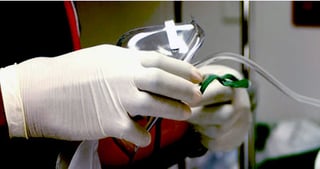
Clinical respiratory services (CRS) are hands on care, assessment, or treatment, governed by state regulations including Respiratory Practice Acts and Licensure Laws. It is usually physician-prescribed in conjunction with medical equipment services. Most of the DME organizations that provide CRS do not get paid for the services and do them as an adjunct to providing some kind of equipment services, such as an oxygen or ventilation program. Because of the limited opportunities for reimbursement for these services, organizations sometimes shy away from them, but the creative use of these services can help an organization expand its scope of services in terms of the equipment it provides. Furthermore, it becomes a very good marketing talking point and can increase business in areas where there IS reimbursement.
CRS standards are not complicated or difficult to comply with if you have a licensed respiratory care practitioner at your organization. Standards you will need to comply with include:
- Your organization will need to develop policies and procedures that define the scope of service you wish to offer. If you want to do one-time respiratory assessments on new oxygen patients, you should have policy and procedure that define this relatively simple process. If you are providing ventilators and want to do weaning and tracheal tube changes and care, policies will need to reflect that.
- You will need physician orders for any treatment, procedure, or assessment you perform. Physician orders can be on a specific treatment plan form that your organization develops, or you can simply solicit signed orders that describe the treatment, procedure, or assessment and give clear instruction.
- Qualified staff and supervisors will need to be in place. “Qualified” means that staff will need to be appropriately licensed in any state you offer the service in. It also means they will need to be competent to do the procedure, conduct the assessment, or give a particular treatment. Competency will need to be assessed through your organization’s competency assessment process. Make sure any training or on going competency assessment is conducted by qualified staff.
- Services should be offered 24 hours/day, 7 days/week. Providing CRS can generate after hours problems and questions that a delivery technician or other staff may not be able to answer. Incorporate clinical staff into the on-call process at your organization. Most companies will have a delivery technician AND a respiratory care practitioner on call for problems. How you triage the calls and respond is up to you, but make sure a clinician is available to answer any clinical questions.
- Comply with state practice act law & regulation, as well as AARC Practice Regulation. Each state has a state respiratory care board that governs the profession within their state. Familiarize yourself with their standards and clarify with them directly if you have questions about the rules. At a minimum, most states require that a respiratory care practitioner be licensed within the state. The license often requires continuing education topics and hours. The American Association for Respiratory Care (AARC) is the national organization for respiratory care practitioners and has “practice guidelines” for various procedures and therapies. For instance, if you are going to provide ventilators, there is a Clinical Practice Guideline (CPG) for providing ventilators in home settings.
Utilizing a respiratory therapist for these services is essential. In addition to these services, your RT can also do teaching and equipment set ups and follow ups that are not necessarily governed by CRS standards. Teaching a patient how to use their oxygen equipment properly is not clinical services, but you still may decide to use a clinician to do that teaching. Once your employee is in place, and once your program has been developed, here’s some tips for how to best use the program for a competitive advantage:
- Do titrations for oxygen patients. Some pulmonologists prefer to order oxygen to keep a saturation level above a certain point. The titration process utilizes a simple pulse oximetry to test a patient’s levels throughout their day—as they sleep, sit, and perform ADL’s.
- Test patients to ensure they can tolerate conservation devices. Conserving devices do not deliver a full, continuous liter flow. If a patient is ordered 2-liters/minute oxygen and wants to use a conserving device, they should be tested to ensure they could tolerate the device.
- Conduct respiratory assessments on patients. These clinical assessments gather information on how a patient is tolerating their homecare. Many physicians see the benefit of a clinical visit to gather information on their patients between office visits.
- Offer home health agencies respiratory care services. Some home health agencies providing nursing visits rely on the provider of respiratory equipment to go beyond teaching equipment use. A good example of this might be a patient who needs a suction machine. The home health agency staff might appreciate an RT giving them a refresher course on suctioning a patient.
Many DME organizations that are providing respiratory equipment such as oxygen, PAP devices, and ventilators employ a respiratory care practitioner. Providing clinical services makes your DME more versatile and perhaps more useful to your referral sources. If you are providing these services, be sure to tell your referral sources. If you are not providing these services, consider it!


